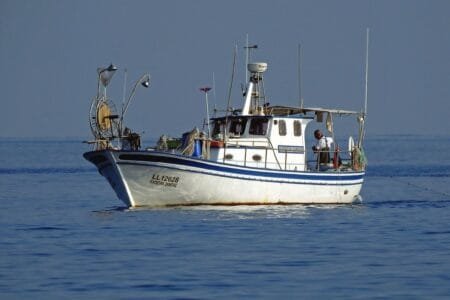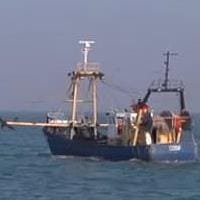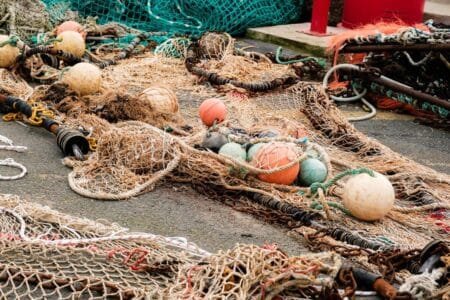The European Commission adopted on 23 August its proposal for fishing opportunities for 2023 for the Baltic Sea. Based on this proposal, EU countries will determine the maximum quantities of the most important commercial fish species that can be caught in the sea basin.
Advertisement
Eastern Baltic cod
Why is the Commission not proposing any changes for 2023 compared to 2022?
Despite the measures of recent years, scientists estimate that the condition of the stock has not improved. They, therefore, advise a continued stop for all catches of eastern Baltic cod for 2023. Hence, the Commission proposes to maintain for 2023 the existing rules and total allowable catch (TAC) levels.
In 2019, scientists discovered that the stock of eastern Baltic cod was in worse state than previously expected and emergency measures had to be taken as this fish stock had been below safe biological limits for several years. The Commission therefore urged Member States to take action, and prohibited fishing for cod in the most concerned areas for the rest of the year.
For 2020, based on scientific advice, the Commission proposed, and the Council agreed, to set a very low TAC which can only be used for cod by-catches. For 2021, again based on scientific advice, the TAC for unavoidable by-catches was reduced further and those rules were kept unchanged for 2022.
Scientists now estimate that the condition of the stock has not improved. They advise, therefore, a continued stop for all cod catches for 2023. The Commission, hence, proposes to maintain for 2023 the existing rules and TAC levels.
Why is the spawning closure maintained?
Science clearly states that such closures have benefits for the stock, which cannot be achieved by a TAC alone. Scientists mention as an example for additional benefits that a closure may allow the cod to spawn without being disturbed and that this can lead to producing more young cod. Eastern Baltic cod is in a very poor condition and the Baltic Sea Multiannual Plan provides that when the amount of fish in the sea is below the limit level, further measures have to be taken to remedy the situation as quickly as possible. Against this background, it is appropriate to maintain the closure covering the entire peak spawning time in all potential spawning areas, and to forbid any disturbing fishing activity during that period.
Why is the prohibition of recreational fishing of eastern Baltic cod maintained?
Since the Eastern Baltic cod is in extremely poor condition, scientists advised to stop all catches, including recreational. This is also coherent with the Baltic Sea Multiannual Plan, which provides that when the size of a stock is below safe biological limits, further measures have to be taken to remedy the situation as quickly as possible. We therefore propose to continue this prohibition, already applicable since 2020.
All stringent measures put in place since 2019 seem not work. What does the Commission intend to do?
While it seems that so far the stock has not yet responded to the various measures, two important aspects have to be taken into account in this context. First, conservation measures need some time to show effects, especially when a stock is in such a bad condition as the Eastern Baltic cod stock. Second, there are broader ecosystem-related factors such as rising water temperatures, pollution, diseases and oxygen depletion, which are assumed to affect the cod stock as well. The Commission therefore held a high-level conference in September 2020, where the ministers responsible for Environment and Fisheries from the Member States across the Baltic Sea region signed a joint declaration to take a variety of measures in order to tackle the ecosystem issues of the Baltic Sea comprehensively. Finally, the Commission has asked the Member States to work on other measures such as developing gears for the flatfish fisheries, which could substantially reduce by-catches of cod.
Western Baltic cod
The ICES advice allows for an increase. Why is the Commission proposing to maintain the TAC level and the accompanying measures from 2022?
Despite that the total catch advice provided by ICES is higher than last year, it is important to also recall that the western Baltic cod has been below safe biological limits with very low recruitment for many years. In 2021 its biomass had dropped to a historic low of about 40% of the minimum size and it has hardly increased since. Against this background, it is appropriate to exercise caution and maintain the TAC level and the accompanying measures from 2022.
Western herring
Why is the Commission proposing to keep this fishery closed?
Despite that the Council drastically reduced the TAC over the last years, the stock of Western herring did not yet recover. Like in the previous four years, the International Council for the Exploration of the Sea (ICES) advises to stop all fishing, so that the very depleted stock can recover. For such situations, the Baltic Multiannual Plan provides that measures need to be taken to ensure the rapid return of the stock to sustainable levels. The Commission, therefore, proposes to keep the targeted fishery closed and to maintain the existing TAC level for unavoidable by-catches.
What does the Commission intend to do to help western Baltic herring recover?
ICES has been advising a stop of western herring fishery for several years already. The EU, therefore, has drastically reduced the quotas in the Baltic Sea over the past few years. The difficulty, however, is that western herring is not only present in the Baltic Sea it also migrates into the Skagerrak and the eastern North Sea. Most of the catches are now actually taken in those areas. For 2022 ICES estimates that only 10% will be caught in the Baltic Sea, while 90% will be caught in the Skagerrak and the North Sea. This means that catches in the Skagerrak and in the North Sea have to also significantly decrease for the stock to recover. However, fisheries in these areas are managed jointly with Norway and the UK. Therefore, the Commission will discuss with both Norway and the UK the need to retain the 2022 measures in place for 2023, keeping the fishing pressure in the Skagerrak low and thus avoiding a negative impact on western Baltic herring.
Other stocks
Why is the Commission not proposing a greater increase for the central Baltic herring?
The stock size has dropped substantially since 2020 and it came close to unsustainable levels last year. While the situation seems to have improved a bit, the stock size remains below healthy levels and it relies on a single good year-class whose size is uncertain. Under these circumstances, the Commission remains cautious and proposes to set the TAC at the lower end of the range indicated by ICES.
Why is the Commission proposing such a large TAC reduction for Bothnian herring?
For Bothnian herring, ICES states that the stock size has substantially decreased, particularly because the fish have become much smaller. The stock size is now very close to unhealthy levels. Under all catch scenarios the stock is expected to decrease even more, with only one scenario in which it would avoid dropping below healthy levels in 2024. This is the scenario the Commission is proposing.
Source: European Commission





